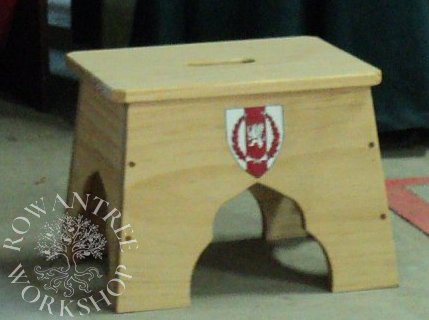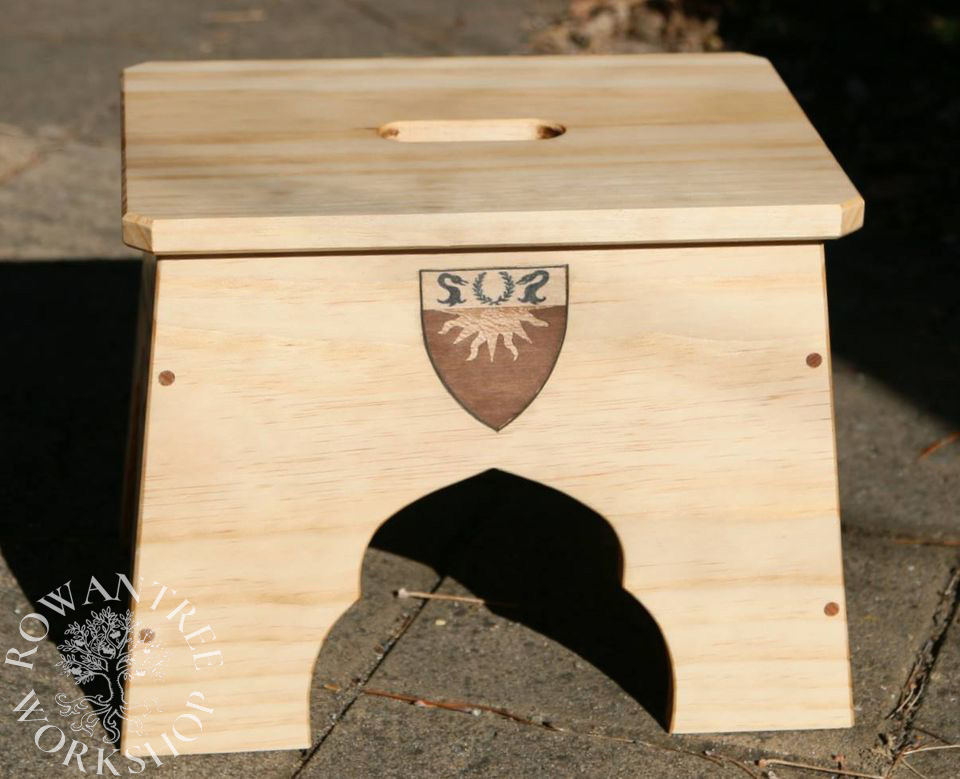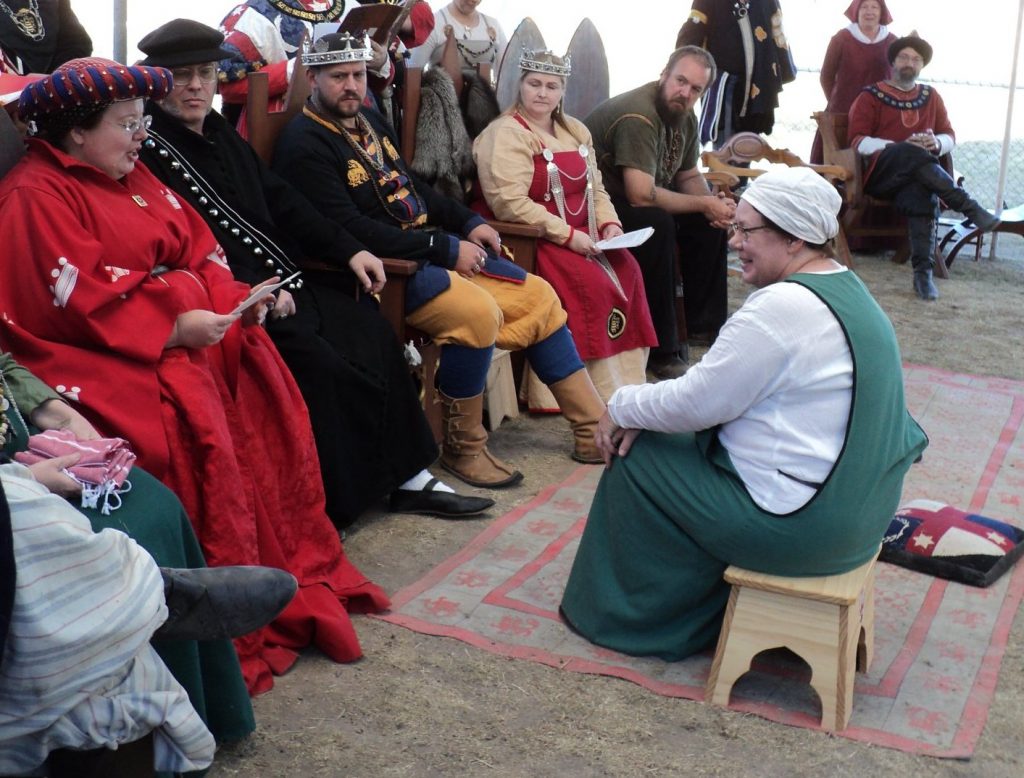This simple stool has so many uses – as a seat, a step, a low table…
This project started when we needed a sturdy, stable, low stool which would work in medieval and renaissance contexts, and also for everyday use around the house.

Research and Design
Simple and ornate rectangular stools abound in medieval art, and many extant examples still exist, such as the example below from the Victoria and Albert Museum. This style is not sturdy enough to stand on safely, but the boarded stool in the Foppa painting and the one from Scappi’s Opera (Scully 2008) are ideal.
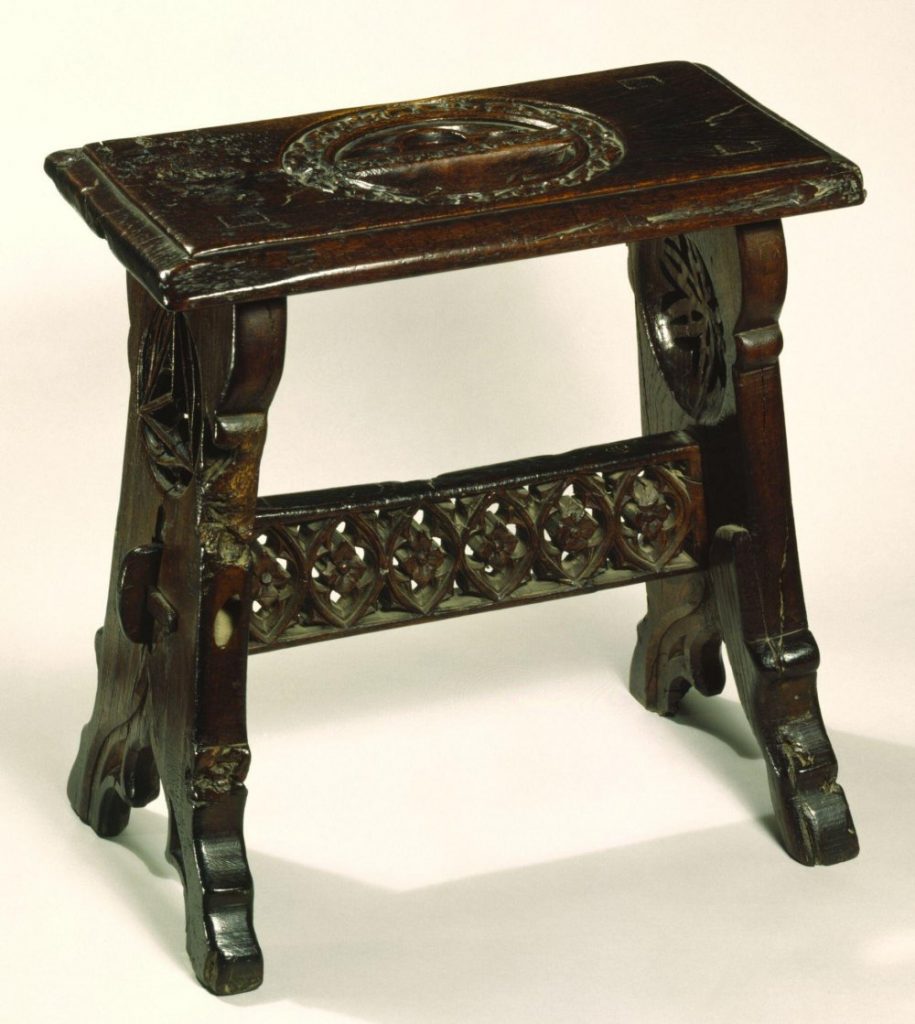
Source: V&A o131546
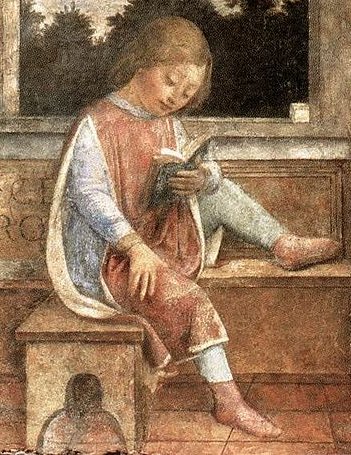
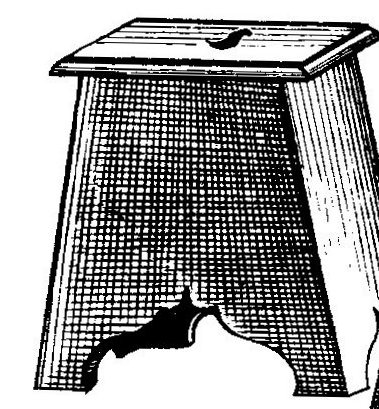
Source: Scappi’s Opera Plate 46
Both the Scappi stool and the V&A example have a slot cut in the seat – a practical addition, which makes it easy to move the stool around with one hand.
My design is based on the Scappi woodcut – the slanted sides are more elegant than a simple rectangular box. Our stool needed to be low, so I adapted the design to a lower profile, as in the Foppa example. This also made it possible to cut the stool out of a standard panel of wood from the hardware store.
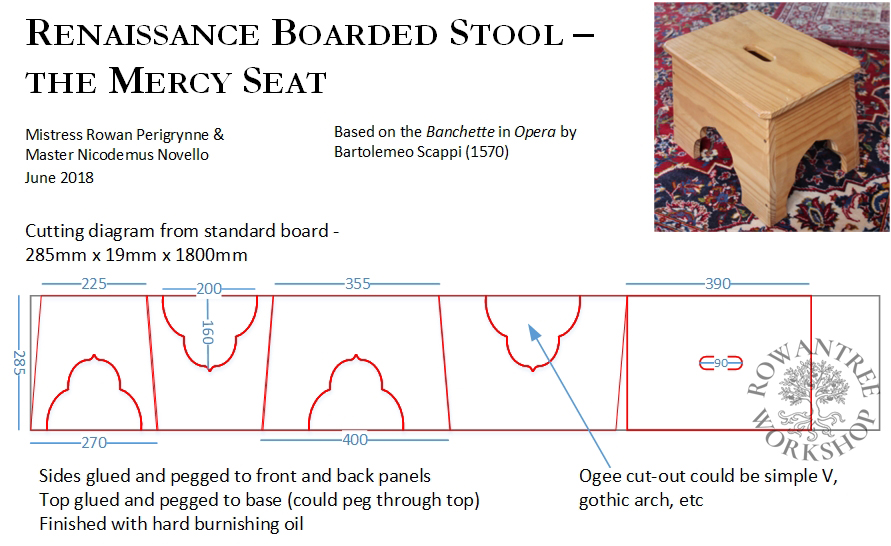
Construction
My husband Nico made the stool in his workshop, using modern tools – table saw to cut the pieces, bandsaw to cut out the ogees, and drill press to cut holes for the dowels. He assembled it with glue and dowels for extra strength, and varnished it.
The stool proved so useful, we have made several more as gifts to various SCA groups for use in court (nicknamed The Mercy Seat). We also made the plans available, and many others have made their own version.
